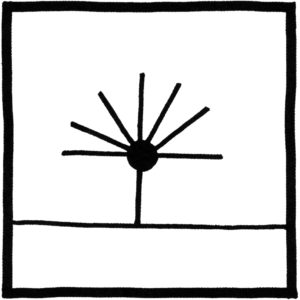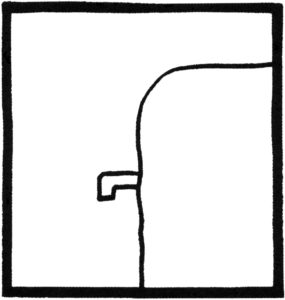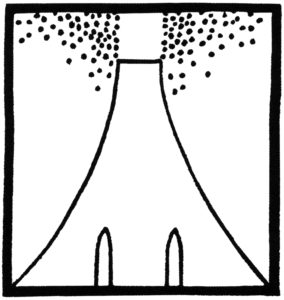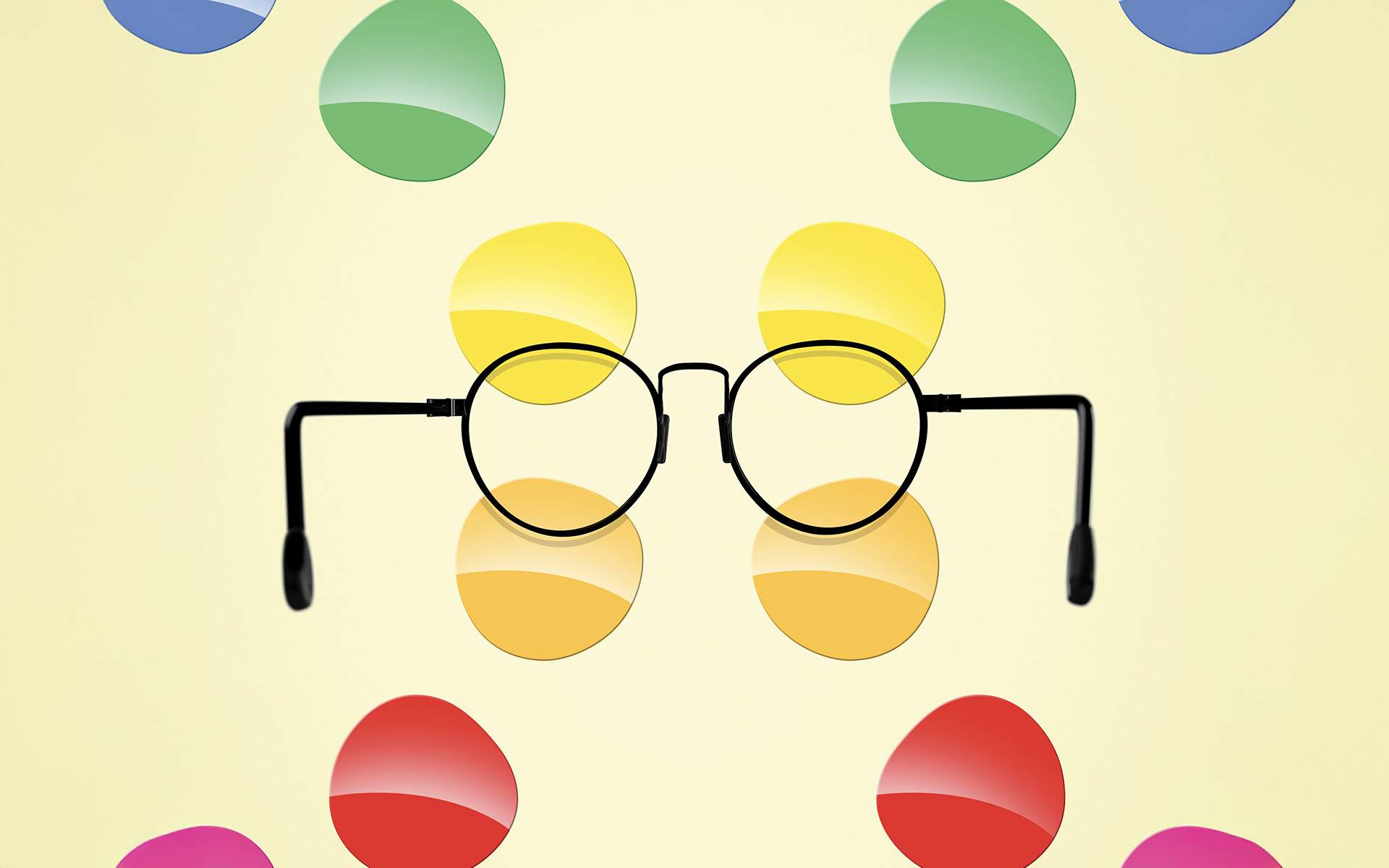From the moment you’re born to the moment you draw your last breath, your brain is stuck in a dark, silent box called your skull. Day in and day out, it continually receives sense data from the outside world via your eyes, ears, nose, and other sensory organs. This data does not arrive in the form of the meaningful sights, smells, sounds, and other sensations that most of us experience. It’s just a barrage of light waves, chemicals, and changes in air pressure with no inherent significance.
Faced with these ambiguous scraps of sense data, your brain must somehow figure out what to do next. Your brain’s most important job is to control your body so you stay alive and well. Your brain must somehow make meaning from the onslaught of sense data it’s receiving so you don’t fall down a staircase or become lunch for some wild beast.
How does your brain decipher the sense data so it knows how to proceed? If it used only the ambiguous information that is immediately present, then you’d be swimming in a sea of uncertainty, flailing around until you figured out the best response. Luckily, your brain has an additional source of information at its disposal: memory.
Your brain asks itself in every moment, figuratively speaking, The last time I encountered a similar situation, when my body was in a similar state, what did I do next?
Your brain can draw on your lifetime of past experiences—things that have happened to you personally and things that you’ve learned about from friends, teachers, books, videos, and other sources. In the blink of an eye, your brain reconstructs bits and pieces of past experience as your neurons pass electrochemical information back and forth in an ever-shifting, complex network. Your brain assembles these bits into memories to infer the meaning of the sense data and guess what to do about it. Your past experiences include not only what happened in the world around you but also what happened inside your body. Was your heart beating quickly? Were you breathing heavily? Your brain asks itself in every moment, figuratively speaking, The
last time I encountered a similar situation, when my body was in a similar state, what did I do next? The answer need not be a perfect match for your situation, just something close enough
to give your brain an appropriate plan of action that helps you survive and even thrive.
This explains how the brain plans your body’s next action. How does your brain also conjure high-fidelity experiences out of scraps of raw data from the outside world? How does it create feelings of terror from a thundering heart? Once again, your brain recreates the past from memory by asking itself, The last time I encountered a similar situation, when my body
was in a similar state and was preparing an action similar to this one, what did I see next? What did I feel next? The answer becomes your experience. In other words, your brain combines information from outside and inside your head to produce everything you see, hear, smell, taste, and feel.
How Your Brain Predicts What You See
Here’s a quick demonstration that your memory is a critical ingredient in what you see. Take a look at the three line drawings:
What do you see in the drawings?
Inside your skull, without your awareness, billions of your neurons are trying to give those lines and blobs meaning. Your brain is searching through a lifetime of past experiences, issuing thousands of guesses at once, weighing probabilities, trying to answer the question, What are these wavelengths of light most like? And it’s all happening faster than you can snap your fingers.
So what do you see? A bunch of black lines and a couple of blobs? Let’s see what happens when we give your brain some more information. The first image is a spider doing a handstand, the second is a submarine going over a waterfall, and the third is a ski jump and spectators as seen by the ski jumper.
When you look back at the line drawings, you should now see familiar objects instead of lines and blobs. Your brain is assembling memories from bits and pieces of past experiences to go beyond the visual data in front of you and make meaning. In the process, your brain is literally changing the firing of its own neurons. Objects that you might never have seen before now leap from the page.
The lines and blobs haven’t changed—you have.
Artwork, particularly abstract art, is made possible because the human brain constructs what it experiences. When you view a Cubist painting by Picasso and see recognizable human figures, that happens only because you have memories of human figures that help your brain make sense of the abstract elements. The painter Marcel Duchamp once said that an artist does only 50% of the work in creating art. The remaining 50% is in the viewer’s brain (Some artists and philosophers call the second half “the beholder’s share.”).
Your brain actively constructs your experiences. Every morning, you wake up and experience a world around you full of sensations. You might feel the bedsheets against your skin. Maybe you hear sounds that woke you, like an alarm buzzing or birds chirping or your spouse snoring. Perhaps you smell coffee brewing. These sensations seem to sail right into your head as if your eyes, nose, mouth, ears, and skin were transparent windows on the world. But you don’t sense with your sensory organs. You sense with your brain.
What you see is some combination of what’s out there in the world and what’s constructed by your brain. What you hear is also some combination of what’s out there and what’s in your brain, and likewise for your other senses.
A Carefully Controlled Hallucination
In much the same way, your brain also constructs what you feel inside your body. Your aches and jitters and other inner sensations are some combination of what’s going on in your brain and what’s actually happening within your lungs and heart and gut and muscles and so on. Your brain also adds information from your past experiences to guess what those sensations mean. For instance, when people haven’t slept enough and are fatigued or low energy, they may feel hungry (because they’ve been hungry before when their energy was low) and may think that a quick snack will boost their energy. In fact, they’re just tired from lack of sleep.
This constructed experience of hunger may be one reason why people gain unwanted weight.
You’ve almost certainly had an experience where the information inside your head triumphs over the data from the outside world. Have you ever seen a friend’s face in a crowd, but when you looked again, you realized it was a different person? Have you ever felt your cell phone vibrate in your pocket when it didn’t? Have you ever had a song playing in your head
that you couldn’t get rid of? Neuroscientists like to say that your day-to-day experience is a carefully controlled hallucination, constrained by the world and your body but ultimately
constructed by your brain. It’s not the kind of hallucination that sends you to the hospital. It’s an everyday kind of hallucination that creates all your experiences and guides all your actions. It’s the normal way that your brain gives meaning to your sense data, and you’re almost always unaware that it’s happening.
I realize that this description defies common sense, but wait: There’s more. This whole constructive process happens predictively. Scientists are now fairly certain that your brain actually begins to sense the moment-to-moment changes in the
world around you before those light waves, chemicals, and other sense data hit your brain. The same is true for moment-to-moment changes in your body—your brain begins to sense
them before the relevant data arrives from your organs, hormones, and various bodily systems. You don’t experience your senses this way, but it’s how your brain navigates the world and controls your body.
But don’t take my word for it. Instead, think of the last time you were thirsty and drank a glass of water. Within seconds after draining the last drops, you probably felt less thirsty. This event might seem ordinary, but water actually takes about 20 minutes to reach your bloodstream. Water can’t possibly quench your thirst in a few seconds. So what relieved your thirst? Prediction. As your brain plans and executes the actions that allow you to drink and swallow, it simultaneously anticipates the sensory consequences of gulping water, causing you to feel less thirsty long before the water has any direct effect on your blood.
Your Brain is a Prediction Organ
Predictions transform flashes of light into the objects you see. They turn changes in air pressure into recognizable sounds, and traces of chemicals into smells and tastes. Predictions let you read the squiggles on this page and understand them as letters and words and ideas. They’re also the reason why it feels unsatisfying when a sentence is missing its final.
In a very real sense, predictions are just your brain having a conversation with itself. A bunch of neurons make their best guess about what will happen in the immediate future, based on whatever combination of past and present that your brain is currently conjuring. Those neurons then announce that guess to neurons in other brain areas, changing their firing. Meanwhile, sense data from the world and your body injects itself into the conversation, confirming (or not) the prediction that you’ll experience as your reality.
In actuality, your brain’s predictive process is not quite so linear. Usually your brain has several ways to deal with a given situation, and it creates a flurry of predictions and estimates probabilities for each one. Is that rustling sound in the forest due to the wind, an animal, an enemy fighter, or a shepherd? Is that long, brown shape a branch, a staff, or a rifle? Ultimately, in each moment, some prediction is the winner. Often, it’s the prediction that best matches the incoming sense data, but not always. Either way, the winning prediction becomes your action and your sensory experience.
So, your brain issues predictions and checks them against the sense data coming from the world and your body. What happens next still astounds me, even as a neuroscientist.
If your brain has predicted well, then your neurons are already firing in a pattern that matches the incoming sense data. That means this sense data itself has no further use beyond confirming your brain’s predictions. What you see, hear, smell, and taste in the world and feel in your body in that moment are completely constructed in your head. By prediction, your brain has efficiently prepared you to act. When your predicting brain is right, it creates your reality. When it’s wrong, it still creates your reality, and hopefully it learns from its mistakes: Your brain incorporates the prediction errors and updates its predictions, so it can predict better next time around.
Which Comes First? Prediction or Action?
Now here’s the final nail in the coffin of common sense: All this predicting happens backward from the way we experience it. You and I seem to sense first and act second. But in your brain, sensing actually comes second. Your brain is wired to prepare for action first.
Yes, your brain is wired to initiate your actions before you’re aware of them. That is kind of a big deal. After all, in everyday life, you do many things by choice, right? At least it seems that way. For example, you chose to read these words. But the brain is a predicting organ. It launches your next set of actions based on your past experience and current situation, and it does so outside of your awareness. In other words, your actions are under the control of your memory and your environment. Does this mean you have no free will? Who’s responsible for your actions?
Philosophers and other scholars have debated the existence of free will pretty much since the invention of philosophy. It’s not likely that we will settle that debate here. Nevertheless, we can highlight a piece of the puzzle that is often ignored.
Think about the last time you acted on autopilot. Maybe you bit your nails. Maybe your brain-to-mouth connection was too well oiled and you muttered something regrettable to a friend. Maybe you looked away from an engaging movie and discovered that you’d downed an entire jumbo bag of red Twizzlers. In these moments, your brain employed its predictive powers to launch your actions, and you had no feeling of agency. Could you have exercised more control and changed your behavior in the moment? Maybe, but it would have been difficult. Were you responsible for these actions? More than you might think.
The predictions that initiate your actions don’t appear out of nowhere. If you hadn’t chomped on your nails as a kid, you probably wouldn’t bite them now. If you’d never learned the regrettable words you tossed at your friend, you couldn’t say them now. If you’d never developed a taste for licorice…you get the idea. Your brain predicts and prepares your actions using your past experiences. If you could magically reach back in time and change your past, your brain would predict differently today, and you might act differently and experience the world differently as a result.
It’s impossible to change your past, but right now, with some effort, you can change how your brain will predict in the future. You can invest a little time and energy to learn new ideas. You can curate new experiences. You can try new activities. Everything you learn today seeds your brain to predict differently tomorrow.
Rewire Your Brain, Change Your Experience
As the owner of a predicting brain, you have more control over your actions and experiences than you might think and more responsibility than you might want. But if you embrace this responsibility, think about the possibilities. What might your life be like? What kind of person
might you become?
Here’s a thought experiment: All of us have had a nervous feeling before a test, but for some people, this anxiety is crippling. Based on their past experiences of taking tests, their brains predict and launch a hammering heartbeat and sweaty hands, and they’re unable to complete the test. If this happens enough, they fail courses or even drop out of school. But here’s the thing: A hammering heartbeat is not necessarily anxiety. Research shows that students can learn to experience their physical sensations not as anxiety but as energized determination, and when they do, they perform better on tests. That determination seeds their brains to predict differently in the future so they can get their butterflies flying in formation. If they practice this skill enough, they can pass a test, perhaps pass their courses, and even graduate, which has a huge impact on their future earning potential.
As the owner of a predicting brain, you have more control over your actions and experiences than you might think and more responsibility than you might want.
It’s also possible to change predictions to cultivate empathy for other people and act differently in the future. An organization called Seeds of Peace tries to change predictions by bringing together young people from cultures that are in serious conflict, like Palestinians and Israelis, and Indians and Pakistanis. The teens participate in activities like soccer, canoeing, and leadership training, and they can talk about the animosity between their cultures in a supportive environment. By creating new experiences, these teens are changing their future predictions in the hopes of building bridges between the cultures and, ultimately, creating a more peaceful world.
You can try something similar on a smaller scale. Today, many of us feel like we live in a highly polarized world, where people with opposing opinions cannot even be civil to each other. If you want things to be different, I offer you a challenge. Pick a controversial political issue that you feel strongly about. In the United States, that might be abortion, guns, religion, the police, climate change, reparations for slavery, or perhaps a local issue that’s important to you. Spend five minutes per day deliberately considering the issue from the perspective of those you disagree with, not to have an argument with them in your head, but to understand how someone who’s just as smart as you can believe the opposite of what you do.
I’m not asking you to change your mind. I’m also not saying this challenge is easy. It might feel pretty unpleasant or even pointless. But when you try, really try, to embody someone else’s point of view, you can change your future predictions about the people who hold those different views. If you can honestly say, “I absolutely disagree with those people, but I can understand why they believe what they do,” you’re one step closer to a less polarized world. This is not magical liberal academic rubbish. It’s a strategy that comes from basic science about your predicting brain.
While you might not be able to change your behavior in the heat of the moment, there’s a good chance you can change your predictions before the heat of the moment. With practice, you can make some automatic behaviors more likely than others and have more control over your future actions and experiences than you might think.
READ MORE
What Your Body Knows Before Your Brain Does
Michelle Maldonado offers a practice for tuning in to the wisdom of the body.
Read More
Your Brain Wants to Oversimplify—Here’s How to Move Beyond Black-and-White Thinking
Binary thinking (“It’s all or nothing”) is an evolutionary habit, but in today’s complex world it doesn’t help us to only see things in black and white. Here’s a skill experts recommend for moving beyond it.
Read More
The Importance of Creative Expression and How to Get Started
In this excerpt from her upcoming book, psychologist Dr. Diana Hill explores why we hesitate to take creative leaps as adults—and what we can do to get unstuck and reclaim our creative courage.
Read More
Q&A: How Connecting With Our Senses Helps Us Get Unstuck
Mindful founding editor Barry Boyce sits down with Norman Farb and Zindel Segal to talk about their new book Better In Every Sense and how reconnecting with our senses can help get us unstuck and establish new patterns.
Read More












